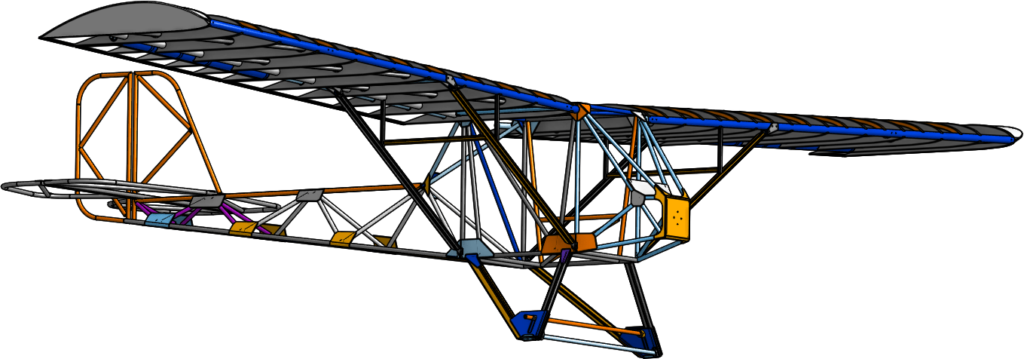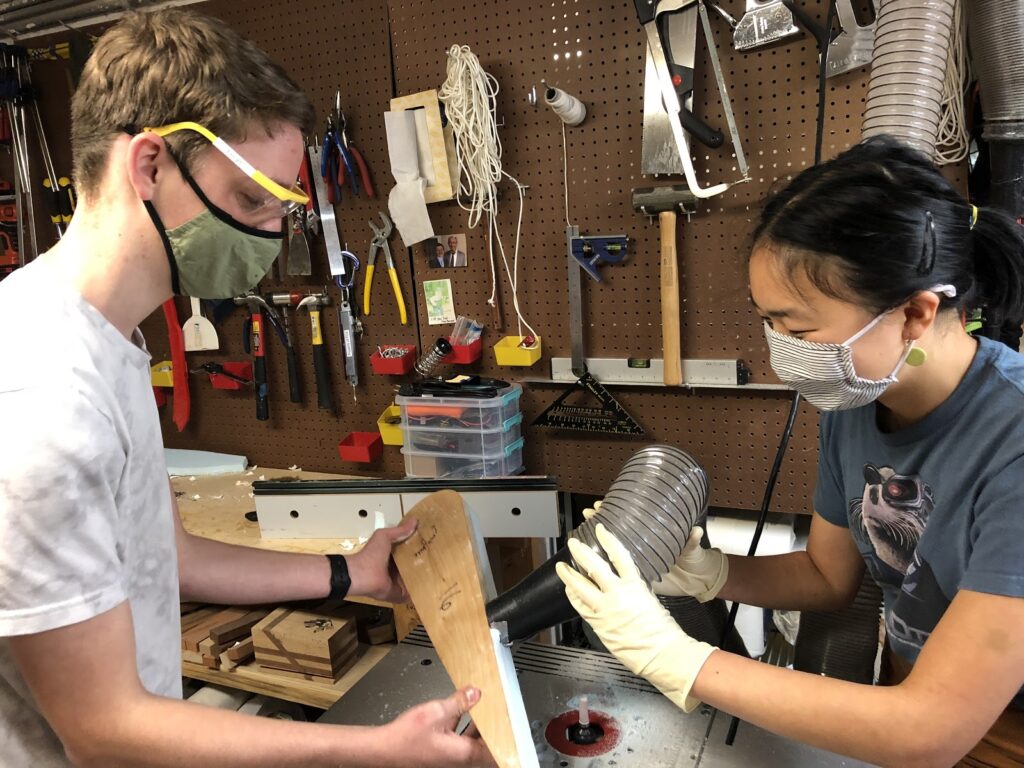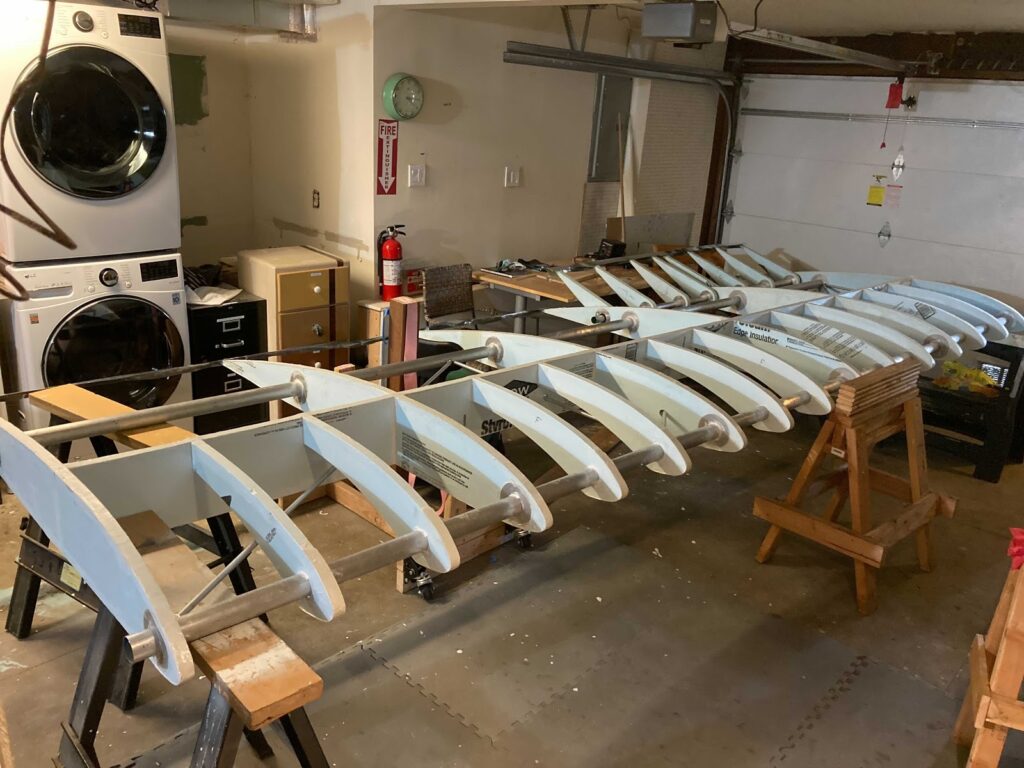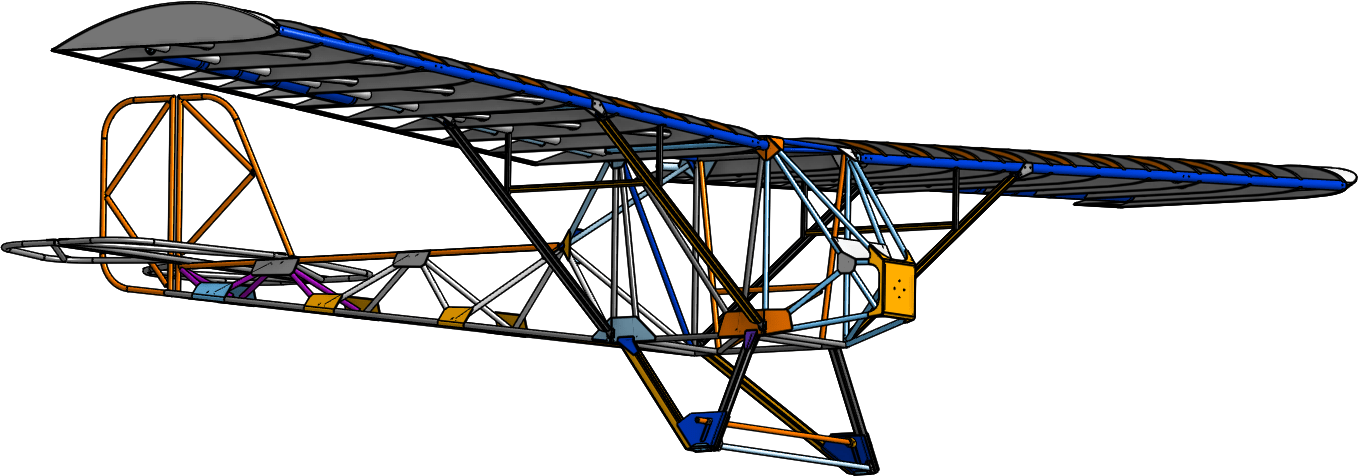Not many high school students can say they lead a nonprofit organization with 501(c)(3) tax-exempt status. In fact, for most students, the idea of “extracurriculars” is limited to some school clubs, laboring through violin or piano lessons, maybe some after-school sports with the hope of competing at the state level. But for almost 60 high schoolers from San Francisco to Los Angeles, that just isn’t enough. They are building an airplane.

Photo courtesy of Flight Club Aerospace
Flight Club Aerospace (FCA), or just Flight Club for short, is a student-founded organization and club run by and for high school students who are “working to build an aircraft, documenting the process and inspiring others to pursue their passion for aviation while delivering accessible aircraft-design centered curriculum,” according to Rudy Lee ’21, one of the eight co-founders of FCA.
Flight Club was founded in October 2019 by LWHS students Ryan Collier ’21, Magnolia Finn ’21, Matthew Gibson ’22, Oliver Krause ’21, Colette Lipton ’21, Justin Tien-Smith ’21, Keaton Zon ’22 as well as Lee. The founding story, according to Lee, goes like this: “We were just at lunch, we were watching this guy named Peter Sripol on YouTube, and we were just like ‘dang, he built an airplane in like a month, if he could do that in a month, you know, we could probably do it in a year…’” And the rest is history.
FCA now boasts over 60 members from high schools across California.
These 60 students are organized into various teams to tackle different aspects of the plane’s creation as well as FCA’s functions as an organization, all delineated on Flight Club’s Slack workspace.
Teams that work with the aircraft’s creation are the design team, the electrical team which is “in charge of creating printed circuit boards for the flight computer as well as sensors and battery,” according to FCA member Maya Ayoub, the software team and the physics team, lead by Collier and Gibson. The marketing team handles “visual design –– the website and merchandise, as well as fundraising pages like Kickstarter,” said Lee, and the outreach team works to coordinate FCA’s public purpose work. Flight Club also has a finance team, in charge of fundraising, pursuing grants and handling the banking. FCA’s admin team is “in charge of making sure everything is happening –– kind of top-down, making sure stuff is getting in progress then reorganizing the team as need be,” according to Lee, though much of the work initiative is also rooted with the members themselves. FCA has gone through about five or six iterations of team structure.
Ayoub is a Junior at Aragon High School in San Mateo. They are a co-leader of FCA’s design team and also work as an administrator. “I’m working a lot with [the] organization of the design team training,” they said. “I’ve been working on the body of the plane and a lot of outreach as well––getting us nonprofit status, working with the rest of the outreach team to create presentations for the summer camps we’re going to be holding over the summer for younger students who might be interested in engineering,” she said.
Though Flight Club was founded at LWHS, due to liability concerns LWHS could not fund or officially be affiliated with FCA. This is what led Flight Club to pursue nonprofit status. “We functioned by ourselves for quite a bit of time, but then we started needing donations because, you know, we’re funding an airplane,” said Ayoub. “We were really adamant about getting this nonprofit status for the longevity of the Flight Club.” They explained how even though crowdfunding was a semi-reliable source of income, having nonprofit status allows FCA to apply for grants in the future.
Though FCA now has a fiscal sponsor, prior to their sponsorship they were kept afloat purely on crowdfunding led by Lee and other admin team members. They raised around $15,000 by reaching out and asking for donations, around $1,000 from merchandise sales and about $1,000 by donating from members’ personal business ventures.
Now, Hack+ (“hack plus”) is Flight Club’s fiscal sponsor. According to their website, they are “an accessible nonprofit accelerator for student-led impacts. We’re a full-spectrum platform that enables students to launch startups, nonprofits and events.”
Ayoub said, “they gave us a domain, all of our emails, a lot of miscellaneous products and, of course, our 501(c)(3) status.” She emphasized that nonprofit status opens up a range of doors for Flight Club: “Now we can actually go out and recruit members, get donations, go after grants and actually be like this physical organization instead of just a bunch of random high schoolers,” they said. Hack+ also works with similar companies like Hackathon to develop student-led events.
FCA is working to build an “ultralight aircraft.” Lee said an ultralight aircraft is “a special category of aircraft within the FAA. It has to be under 254 lbs, has to have a stall speed of 24 knots.” This means that it must be able to remain in the air at a minimum of 24 knots (approximately 28 miles per hour). This classification also means that Flight Club will not have to register their aircraft and can fly without a pilot’s license. “We are going to get pilot’s licenses just because, you know: safety,” Lee said.
Though FCA’s plane is considered an ultralight aircraft, the process of design and construction is no less complicated. Lee walked through some of their initial thought processes in designing the plane which Flight Club has dubbed “The Karen”: “We’ve determined what’s our cruise velocity, what’s our cruise altitude, how heavy we want our plane to be. Once we did that it was a lot of physics calculations.”
In addition, the design team, which both Ayoub and Lee are leaders of, asked questions like, “roughly how big do we want our wing to be? What’s our aspect ratio?” The aspect ratio is the ratio of the depth of the wing, the cord, to the length of the wing, wingspan. “All these different numbers factor differently into how the plane performs and how it’s built,” said Lee.
After defining their parameters, FCA threw itself into research: “we read multiple textbooks––and we’re still doing research to this day depending on what part of the plane is being built,” said Lee.
FCA relies heavily on computer-aided design (CAD) to do this designing and building. Ayoub said, “we’re using Fusion 360 which is a CAD program that also lets us run simulations. So we’re making the body of our plane in the program and then adding forces to it to simulate [flight conditions].” This whole design process is highly collaborative. “We [on the design team] have a lot of calls where we talk about each other’s designs and see where we can all improve, kind of like an incubator for design ideas,” said Ayoub.
Lee has been leading build days in his garage every weekend. With ample equipment and shop tools from Lee’s personal collection, as well as a 3D printer donated by Krause, Flight Club has been able to provide much of its own equipment only requiring a few extra metal-appropriate attachments. Overall, FCA has spent around $3,300 on parts for the plane from the wing components, to the wheels, brakes and axles, to miscellaneous electronics.

Photo courtesy of Flight Club Aerospace
In the next month, they anticipate spending at least another $4,000 on their fuselage components (the fuselage is the main body of an aircraft) as well as around $3,000 on a gas-powered power train –– the system that is dedicated to powering the aircraft. An environmentally-friendly electric power train was FCA’s original aspiration for their aircraft, but being on the pricier end of the spectrum at around $11,000 they have decided to start off gas-powered and transition to electric after the plane’s maiden voyage.
With ample funding flowing both in and out of FCA, its leaders are working to make sure they are truly earning their sponsorship/discounts (from Hack+ as well as MGM Compro and Tattu Batteries) and nonprofit status. “We are trying to do a lot of grant work because we have a lot of aspects of our team that have a public purpose with them,” said Lee. Flight Club has been teaching classes about aeronautics, engineering and physics at middle and elementary schools all over the Bay Area. Lee explained that FCA will also be leading a summer program: “We will be volunteer teaching for this other student-led group, Robotics for All […] we are gonna be teaching, like, a series of eight-hour workshops on the different parts of our plane to teach younger kids about STEM and engineering. We’ve done a lot of stuff for the community so we’re also applying to grants to help fundraise for those aspects of our project.”
This public purpose aspect of FCA started with their blog. A few weeks into the project the group realized that they wanted to document the progress of their plane and blog about it––that had been part of their mission from the very beginning. They post to the blog on their website frequently with updates on the design and building process and choices.
With this new public aspect of Flight Club, members were feeling like they should be doing more to share their knowledge and the experience they were gaining. And so the teaching began. “We’ve taught at Gate Elementary, we taught at Brandeis Marin which was my middle school,” Lee said. FCA’s teaching began after a donor to Flight Club’s daughter asked if they could present at the elementary school for gifted children that she taught at. With a solid curriculum now established, Flight Club’s teaching work grew from there.
The Karen’s maiden voyage is also slated to take place this summer. A professional flight tester will ensure the plane’s safety and assess its performance, making sure it doesn’t “fall apart and die” (Lee’s words) and at the moment of truth, Flight Club member and cofounder Ryan Collier is set to be Flight Club’s maiden pilot. “At one point we’re going to have everyone in matching team jumpsuits with all of our sponsors’ logos on it,” said Lee.
Flight Club also hopes to debut its aircraft at EAA AirVenture Oshkosh 2021 (2022 at the latest), an annual air show and convention for aviation lovers held each summer in Wisconsin.

Photo courtesy of Flight Club Aerospace
At the end of the day, Flight Club isn’t just building an aircraft, they’re building a community, a family. “That’s my favorite part of the team by far, just the dynamic,” Lee said, “whenever we meet it’s like we’re all a bunch of really silly and nerdy teenagers.” He describes it as a balance between “hyper-professionalism and total goofiness.” Ayoub feels the same; when reflecting on her favorite part of Flight Club, they said, “I think it’s honestly been team bonding days because, you know, you work with these people –– especially over the summer where we would take like 10 hour days and just grind out these physics equations and designs –– you get to see these people who you’ve worked so intensely with and see them in a relaxed atmosphere beyond just as an engineer.”
FCA has created a space where students from across California can come together and fuse diverse interests from design to math to engineering and physics. Both Ayoub and Lee hope to see this grow and expand to a place where students across the state, across the nation, can come together to learn and grow and explore their multifaceted interests.
Flight Club Aerospace is always looking for new members: those interested can reach out at general@flightclubaerospace.com.






